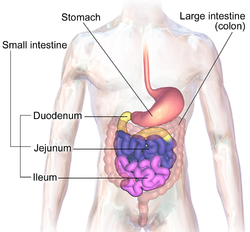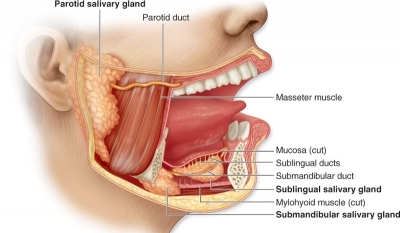When does food reach our intestines?

Everything you eat has to be chopped up and broken down before the nutrients or goodness in it can be taken into your blood and used by your body cells to make energy. This takes place in your digestive system or gut. The food leaves your stomach a little at a time and goes into your small intestine. This is where most of the digestion takes place by adding digestive chemicals and absorbing the digested chemicals and absorbing the digested nutrients into the body. The lining of the intestine is folded into millions of tiny fingers called villi. Undigested food continues its journey on to the large intestine where excess water and minerals are extracted from the leftover food.
Fact File: How much energy do we use? Sitting or lying: 43-72 cals per hour Walking: 144-216 cals per hour Running: 432-575 cals per hour |
Picture Credit : Google
